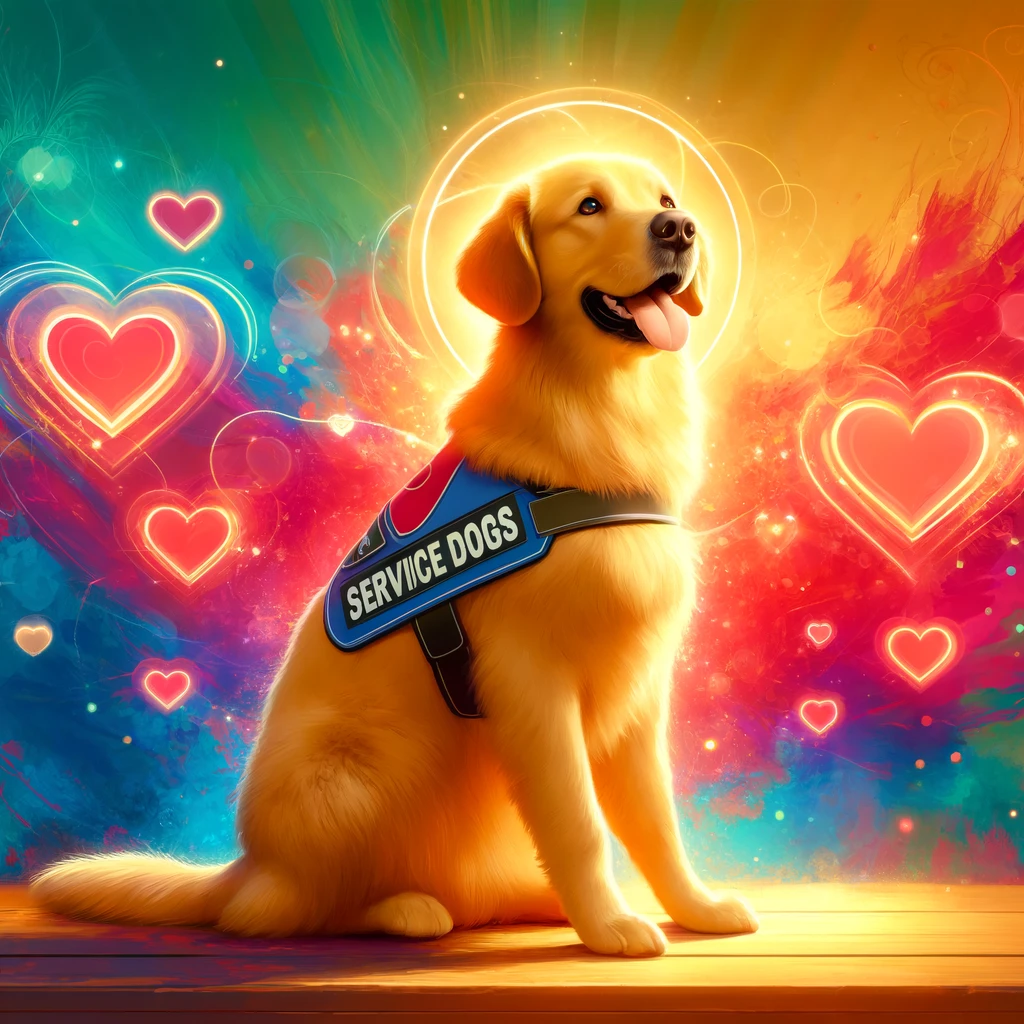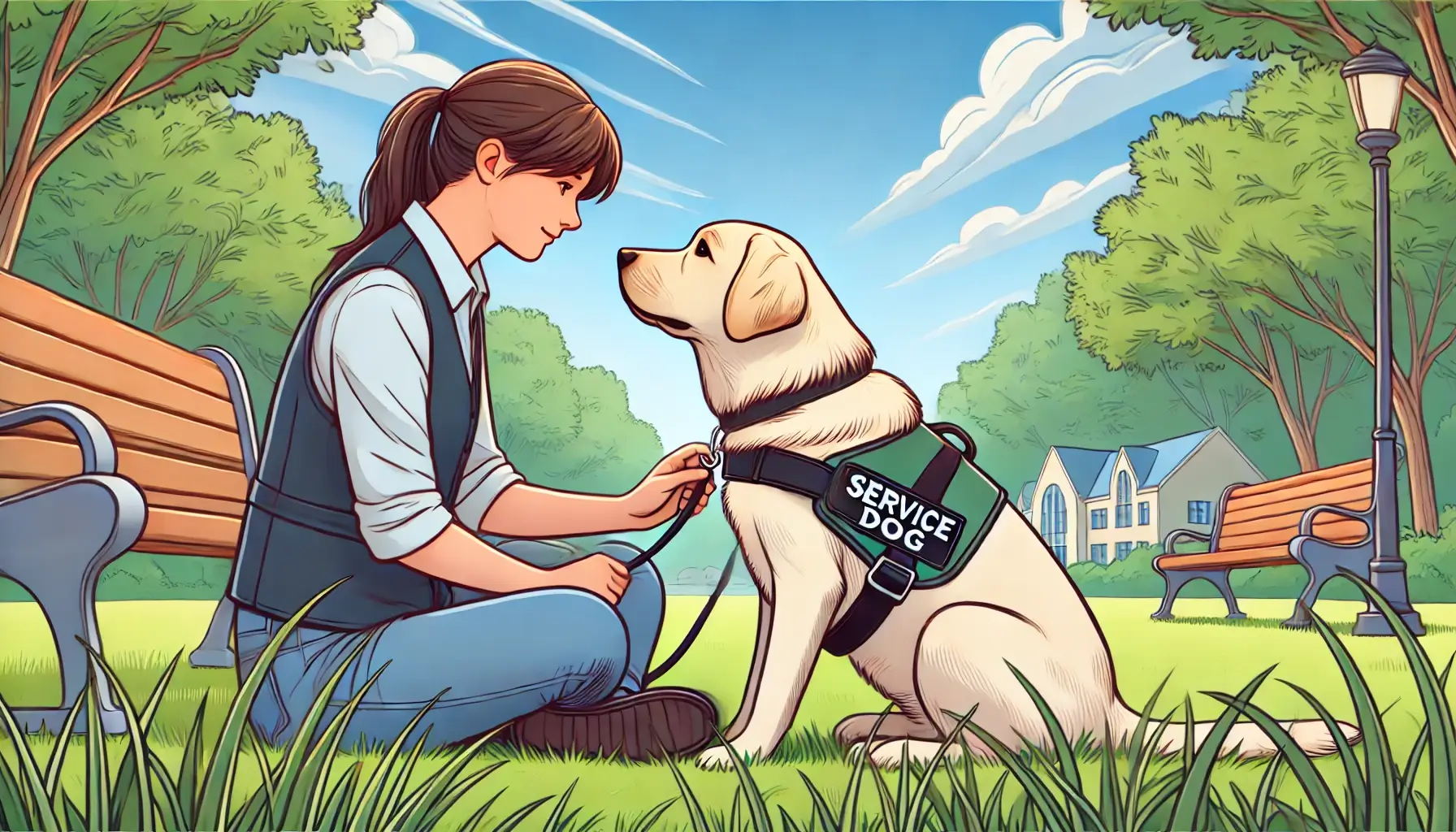Adopting Failed Assistance Dogs: A Loving Home for a Deserving Companion
Picture this: a dog, trained to be the eyes for the blind, the ears for the deaf, or the calming presence for an anxious heart. Now imagine, this same dog, despite its golden heart and eagerness to please, just can’t make the cut. It’s not about lack of effort or love; sometimes, the fit isn’t right, or the tasks are too tall. Enter the concept of “failed” assistance dogs.
But let’s get one thing straight – ”failed” is a misnomer. These pups haven’t failed; they’ve simply taken a detour on their journey to finding their purpose. This isn’t a sad story; it’s a tale of unexpected opportunities and the joy of finding a forever home that celebrates them for exactly who they are.
Diving into the world of adopting these uniquely trained canines offers a fresh perspective on companionship and the notion that success isn’t a one-size-fits-all. So, buckle up as we unfold the heartwarming narrative of giving a deserving companion a loving home, where their quirks aren’t setbacks but badges of honor.
Table of Contents
- 1. Unveiling the Potential: The Journey of Failed Assistance Dogs
- 2. From Training Grounds to Couch Cuddles: Why These Dogs Deserve a Second Chance
- 3. The Adoption Process: Navigating the Path to Your New Best Friend
- 4. Setting the Stage for Success: Preparing Your Home for a Four-Legged Hero
- 5. Bonding Beyond Training: Building a Lasting Relationship with Your Adopted Dog
- 6. Troubleshooting Common Challenges: Tips for a Smooth Transition
- Concluding Remarks
1. Unveiling the Potential: The Journey of Failed Assistance Dogs
Every year, countless dogs embark on training to become assistance dogs, dreaming big to support and uplift their human partners. But not all tales wag towards success. Some pups find the journey tough, winding up as “career change” dogs. But here’s the twist: this transition opens up a world of opportunities for these dogs to find their true calling - becoming beloved pets and emotional support companions in loving homes. They bring with them not just tails of attempts and retries but a bundle of trained behaviors and an eagerness to love and be loved.
What sets these “almost” assistance dogs apart? Their journey has instilled in them a unique set of skills and disciplined behaviors, making them ready-made companions for a variety of homes and hearts. From their socialization adventures to their exposure to diverse environments, these dogs have a head start in adapting to new surroundings. Plus, their previous training usually includes some basic obedience commands, making them well-equipped housemates. For families, individuals, or those in need of a fur-coated heart-warmer, adopting a failed assistance dog can be a rewarding and enriching experience.
Here’s a quick peek at what these canine companions might bring to your life:
- Social Butterfly Skills: They’ve been around the block, seen the sights, and are well-versed in mingling.
- Discipline: Early rising for training sessions means they’re often more routine-friendly than your average pooch.
- Love for Learning: They’ve got a history of training, meaning they’re often quick learners and eager to please.
- A Heart of Gold: Just because they didn’t make the cut doesn’t mean they aren’t cut out for bringing joy and comfort.
Remember, while they might come with some cool perks, they’re also looking for that forever love. A bit of patience, understanding, and a dash of tender, loving care can help these almost-heroes adjust and thrive in their new roles as your loyal companion.
2. From Training Grounds to Couch Cuddles: Why These Dogs Deserve a Second Chance
Imagine a dog trained to the nines, ready to wear the cape, but then, they don’t pass the final exam. Shocking? Maybe. A tragedy? Not at all. These dogs, often dubbed ”career change dogs,” have learned a plethora of commands and possess a level of socialization that most pet dogs can only dream of. But when they miss the mark for becoming assistance dogs, it doesn’t mean they lack the capacity to become exemplary companions. They just shift their superpowers from the professional realm to personal, transforming from training grounds heroes to couch cuddle champions. The reason? They might be too friendly, slightly distractible, or have a minor health issue – quirks that hardly dim their shine in a home environment.
Now, why should you consider making a hero’s lair for one of these almost-super dogs? First off, you’re getting a dog with a top-tier education. Think Ivy League, but for canines. They’ve been socialized, house-trained, and know commands that can make your life easier and more entertaining. Secondly, adopting one means giving them a second chance – not at heroics, but at being a cherished pet. They come ready to slip into family life with the ease of a seasoned professional, all while carrying a heart full of love and loyalty. Plus, let’s not forget the bragging rights that come with having a dog that’s almost a superhero. Here’s a quick rundown:
- Socialized to the Max: They’ve met more humans and animals than most pets ever will.
- Commands Galore: Sit, stay, fetch, and then some. These dogs know their stuff.
- House-Trained Heroes: Accidents? What are those? These dogs have etiquette.
- Lifetime of Love: Their training might have been for a job, but their companionship is for life.
All in all, adopting a career change dog is a heartwarming way to provide a loving home to a dog that’s more than ready to be part of a family. It’s not about adopting a pet; it’s about welcoming a hero into your home.
3. The Adoption Process: Navigating the Path to Your New Best Friend
So, you’ve set your heart on a furry friend who aimed for the stars but landed right into your lap instead? Adopting failed assistance dogs isn’t just about giving them a second chance; it’s about welcoming a hero in disguise. These pups have gone through extensive training, socialization, and have a heart bigger than their bite. They’re primed for affection but sometimes, just sometimes, they don’t make the cut for assistance work. Not because they lack spark, but perhaps they’re too sociable, a tad too eager, or have a minor health issue. Their “flaws” make them perfectly imperfect for your home.
Embarking on this adoption journey isn’t your average walk in the park. But fear not, the path is lined with support. Here’s a breakdown:
- Getting in touch: First stop, reaching out to organizations that specialize in rehoming these almost-heroes. Google is your friend but so are social media and local vet recommendations.
- The match-making: Expect a bit of a personality quiz, for both you and the dog. It’s all about finding the right vibe. You’ll discuss your lifestyle, doggy do’s and don’ts, and what you’re expecting from each other.
- Home sweet home: Before the grand welcome, there’s usually a home visit to ensure your place is safe and sound for your new best friend. Think of it as a pre-date check from a caring cupid.
| What You’ll Need | Why It Matters |
|---|---|
| Patience | Adjustment takes time. |
| A sense of humor | For those oops moments! |
| Open heart | Lots of love to give and receive. |
| Training mindset | Even almost-heroes need a refresher. |
Lean in and listen, because these furry friends come with their own unique stories. They might have missed one calling, but they’re ready to fulfill another: becoming your most loyal companion. They say not all heroes wear capes; some come with leashes and a wagging tail that can wag away the blues.
4. Setting the Stage for Success: Preparing Your Home for a Four-Legged Hero
Sure, here’s a snazzy take on setting up your home for a new four-legged sidekick, specifically one of those noble assistants that didn’t quite make the cut but surely deserves a standing ovation and a cozy nook in your life.
First off, think of your place as a stage. A grand, welcoming theater where your new buddy is the star of the show! But remember, even stars need their backstage prepped to perfection. Safety first—start with baby-proofing, but for dogs. Tuck away those tempting but dangerous wires and ensure no tiny, swallowable objects are lying around. Then, zoom into comfort. Picture a fluffy bed in a quiet corner, away from the hustle and bustle, where your dog can retreat and revel in their own company. Sprinkle around a few well-chosen toys for the playful solos and maybe a couple of treats to sweeten their arrival.
Now, let’s bring some fun to the facts with a table about Essential Supplies:
| Item | Purpose |
| Chew Toys | Keep those jaws busy and away from shoes. |
| Water and Food Bowls | Hydration and nutrition, served up in style. |
| Comfy Bed | A snoozing sanctuary for royal rest. |
| Leash and Collar | For those thrilling “out and about” duets. |
Top it all off with a big scoop of patience and a sprinkling of love. Getting your home ready isn’t just about the physical stuff, but also about setting up a vibe of warmth and welcome. So, crack open that door, roll out the red carpet, and get ready for wagging tails and heart-melting moments. Remember, adopting a failed assistance dog doesn’t mean taking in a failure; it’s opening your world to a paw-some hero in disguise.
5. Bonding Beyond Training: Building a Lasting Relationship with Your Adopted Dog
Sure, diving right in!
When you bring a failed assistance dog into your home, you’re not just getting a pet; you’re gaining an extraordinary friend with a truckload of love to give. But remember, this isn’t about mastering the sit-stay-come trifecta. It’s about knitting your lives together with the cozy yarn of companionship and trust. Start with activities that tighten that bond. Play fetch, but make it epic – think frisbee at sunset. Share quiet moments too. A calm evening on the porch, just being together, works wonders. It’s these shared experiences that solidify your friendship, turning training into trust, commands into communication.
Consider these bonding tips to transform your living room into a love nest for your four-legged partner:
- Mealtime is bonding time: Sprinkle a little love into their bowl. Hand-feeding now and then nurtures closeness.
- Daily walks, twice the fun: Explore new paths together. Surprise your furry friend and yourself with the wonders around your neighborhood.
- Learn a new trick together: Not for performance, but for partnership. It’s a fun way to engage and grow together.
- Quiet time is quality time: Just chill together. No distractions. Discover the comfort in simply being near each other.
Remember, it’s the small, daily gestures that pave the way to a profound connection. It’s not always about the grand gestures but the quiet, consistent acts of love that truly bond.
6. Troubleshooting Common Challenges: Tips for a Smooth Transition
So, you’ve opened your heart and home to a failed assistance dog, ready to shower them with love and a comfy couch spot. But hey, even in doggo paradise, hiccups happen. Not to fret! Whether it’s adjusting to new routines or dealing with leftover training quirks, smoothing out the transition is key. Let’s dive into some troubleshooting tips to keep tails wagging.
Settling In: First off, remember patience is a virtue, especially for your new furry friend who’s learning the ropes of being a pet. Establish a predictable schedule for meals, walks, and cuddles. Consistency is comforting. And, sprinkle in some fun training refreshers that align more with pet life than service. Think ‘Fetch’ instead of ‘Fetch my meds.’ It’s all about adjusting expectations – theirs and yours!
- Understand Their Past: These pups are wired a bit differently; they’ve had training that’s more rigorous than the average pet. Recognize this and adapt. If they resist a command they were likely trained on, it’s not stubbornness, it’s confusion. Break it down, keep it positive, and celebrate the small wins!
- Communication is Key: No, we’re not expecting you to bark. But learning each other’s signals and body language can significantly ease the transition. If Fluffy raises an eyebrow when you grab the leash, that’s her saying, “Walkies? Yes, please!” Listen, watch, and learn from each other.
- Introduce New Friends Carefully: Socialization is important, but let’s not dive into the deep end too quickly. Start with calm, controlled introductions to other pets and humans. Overwhelming your new dog can set back progress. Keep it chill, and let them set the pace.
It’s a journey filled with learning curves, belly rubs, and yes, the occasional whoops-a-daisy. But remember, patience and understanding will cast a spell of contentment over your new arrangement. After all, adopting a failed assistance dog isn’t just about giving them a second chance—it’s about creating a loving companionship. Ready, set, tails wag!
Concluding Remarks
—
As we wrap up our exploration into the heartwarming world of adopting failed assistance dogs, let’s remember that every cloud has a silver lining. These pups may not have aced their exams in Assistance Dog 101, but they’re graduating with honors in the art of companionship and love. It’s a unique kind of joy to give a forever home to a pup who’s had an unconventional start to life.
Here’s a quick checklist to consider if you’re thinking of adopting a failed assistance dog:
- Space and Environment: Do you have the room and a safe environment that’s conducive to their well-being?
- Time and Commitment: Are you ready to invest the time in helping them adjust and thrive in their new home?
- Patience and Understanding: Can you offer the patience and understanding they’ll need as they transition from a training program to a pet lifestyle?
- Love and Attention: Are you overflowing with love and attention to shower on your new furry friend?
Remember, adopting a failed assistance dog isn’t about giving a home to a pet who couldn’t make the cut. It’s about welcoming a creature with its own unique set of skills, quirks, and an enormous capacity for love into your family.
In the end, these dogs prove that sometimes, veering off the expected path leads to the most beautiful destinations. They might not be out there saving lives in the way they were initially trained to, but they’re certainly enriching and transforming ours, one paw at a time.
So, if you’re ready for a journey filled with unexpectedly profound connections, laughter, and maybe a chewed slipper or two, consider opening your heart and home to one of these extraordinary pups. Who knows? You might just find that the one who “failed” to meet a certain standard ends up teaching you the true meaning of success.
Embrace the journey. After all, love is the ultimate assistance any of us could ever offer.







Leave a Reply